
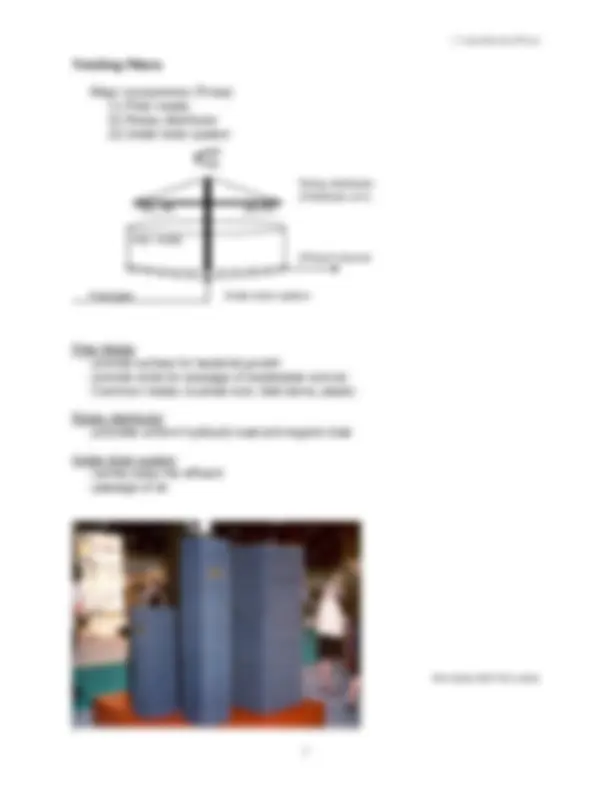
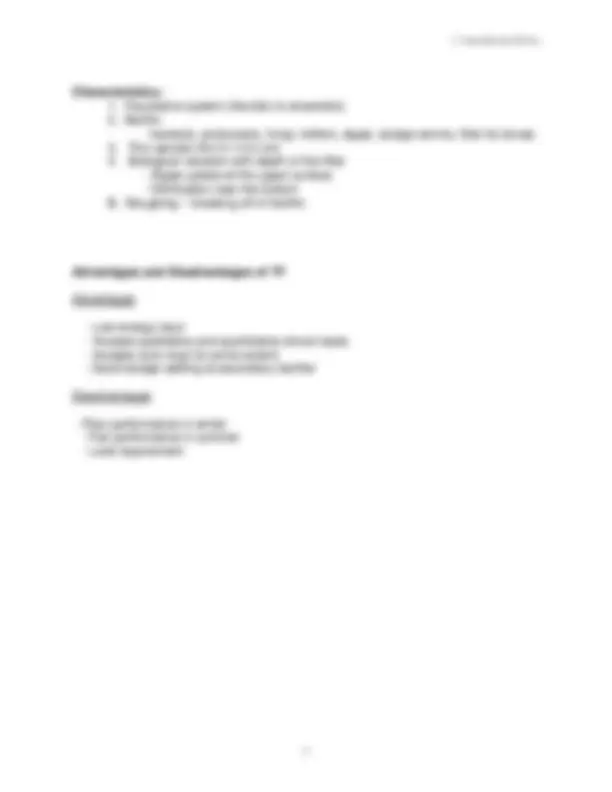
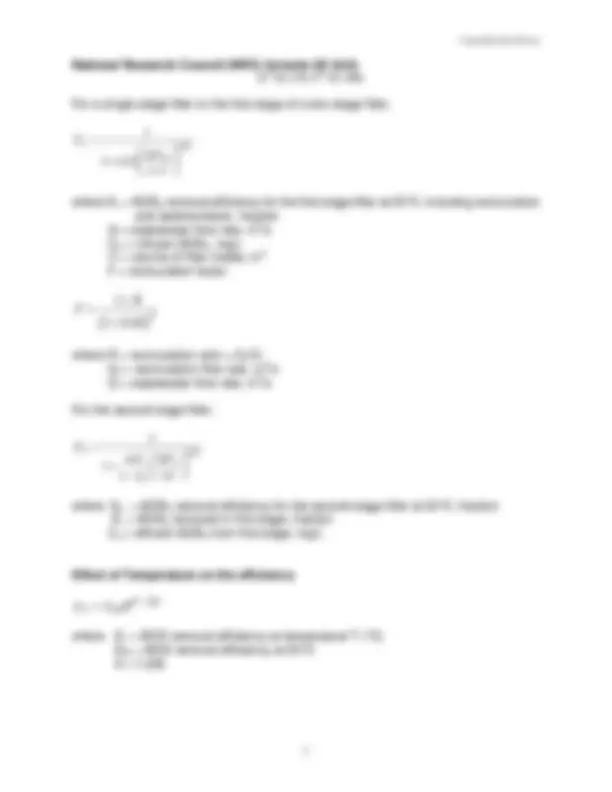
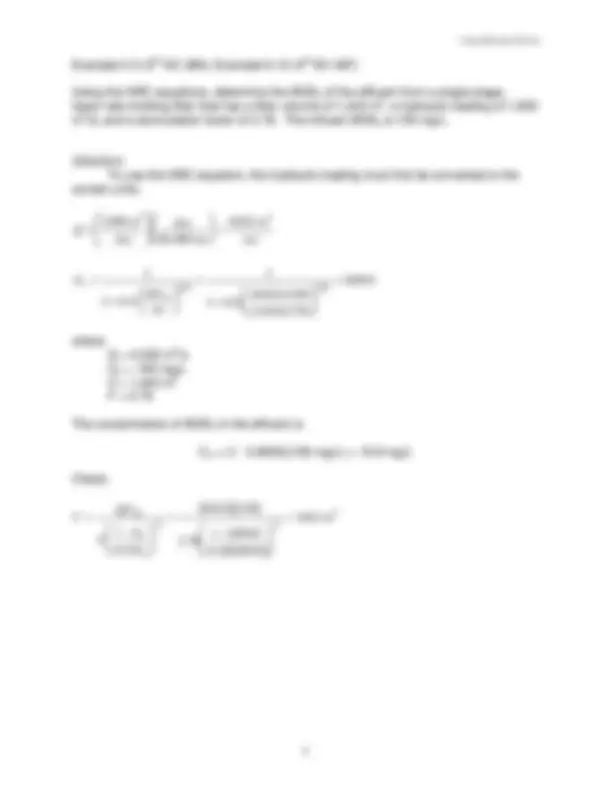
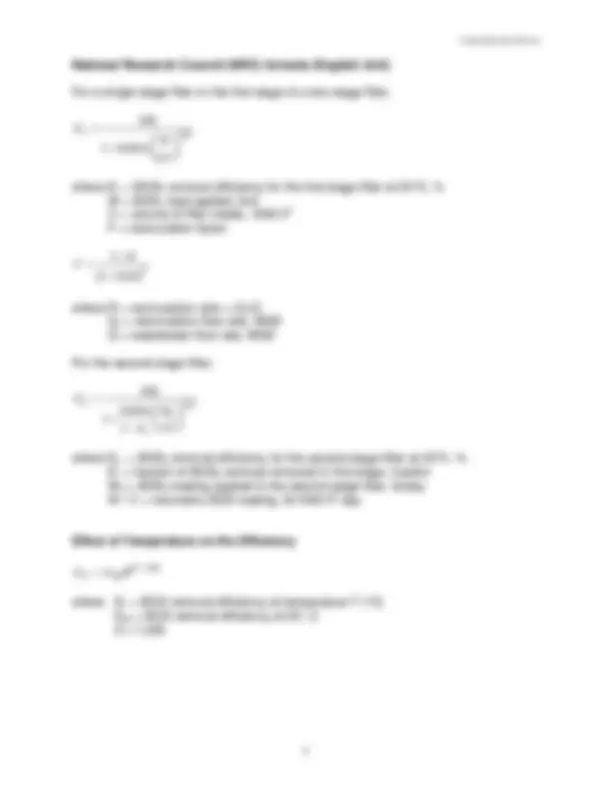
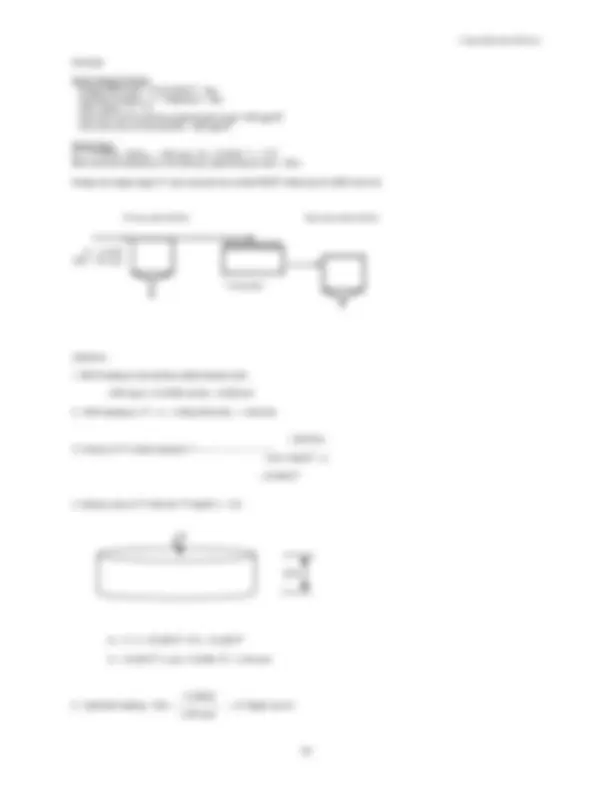


Study with the several resources on Docsity

Earn points by helping other students or get them with a premium plan


Prepare for your exams
Study with the several resources on Docsity

Earn points to download
Earn points by helping other students or get them with a premium plan
Community
Ask the community for help and clear up your study doubts
Discover the best universities in your country according to Docsity users
Free resources
Download our free guides on studying techniques, anxiety management strategies, and thesis advice from Docsity tutors
An in-depth analysis of biological treatment systems, specifically trickling filters and rotating biological contactor (rbc). It covers the principles, components, characteristics, advantages, and disadvantages of these systems. The document also includes examples and formulas for calculating bod5 removal efficiency using the national research council (nrc) formula.
Typology: Study notes
1 / 12

This page cannot be seen from the preview
Don't miss anything!







7-7-AttachGrowth_F09.doc
Biological Treatment
Types of Secondary Treatment Systems
e.g. Trickling Filters, Rotating Biological Contactor (RBC) Submerged Rotating Biological Contactor (SBC)
Attached Growth System
Principles - Schematic diagram showing principles of the biological process in a trickling filter.
Nutrient Organic carbon Medium Surface
Air O 2 O 2
End products CO 2
Anaerobic Aerobic 0.1 - 0.2 mm Biofilm
Biological process on medium surface in a Trickling Filter
7-7-AttachGrowth_F09.doc
Biofilm images (x 1000): dead (red) and live (green) bacterial cells grown on an MFC electrode. Left: heavy growth with clustered live cells on the anode membrane. Right: sparse attachment to a control membrane (an anode-material membrane unattached to the electrical circuit).
Examples
7-7-AttachGrowth_F09.doc
Characteristics:
Advantages and Disadvantages of TF
Advantages
Disadvantages
National Research Council (NRC) formula (SI Unit) (3rd^ DC 379; 4th^ DC 486)
For a single-stage filter or the first stage of a two-stage filter,
in
(^1) 0 5
.
where E 1 = BOD 5 removal efficiency for the first stage filter at 20°C, including recirculation and sedimentation, fraction Q = wastewater flow rate, m^3 /s Cin = influent BOD 5 , mg/L V = volume of filter media, m^3 F = recirculation factor
2
where R = recirculation ratio = Qr/Q Qr = recirculation flow rate, m^3 /s Q = wastewater flow rate, m^3 /s
For the second stage filter,
e
2
1
0 5
.
where E 2 = BOD 5 removal efficiency for the second stage filter at 20°C, fraction E 1 = BOD 5 removed in first stage, fraction Ce = effluent BOD 5 from first stage, mg/L
Effect of Temperature on the efficiency
where ET = BOD removal efficiency at temperature T (°C) E 20 = BOD removal efficiency at 20°C θ = 1.
2 1
E QC^ e E VF
2 2 1
E E QC^ e E VF
2 2 1
E QC e E E VF
( )
2 1 2 2
QC e (^) E E VF E
( )
2 1 2 2
e 4.
( )
2 1 2 2
V QC^ e E F E E
Example 5-5 (3rd^ DC 380); Example 6-12 (4th^ DC 487)
Using the NRC equations, determine the BOD 5 of the effluent from a single-stage, lower-rate trickling filter that has a filter volume of 1,443 m^3 , a hydraulic loading of 1, m^3 /d, and a recirculation factor of 2.78. The influent BOD 5 is 150 mg/L.
(Solution) To use the NRC equation, the hydraulic loading must first be converted to the correct units.
m day
, sec
sec
in
(^1) 0 5 0 5
..
where Q = 0.022 m^3 /s Cin = 150 mg/L V = 1,443 m^3 F = 2.
The concentration of BOD 5 in the effluent is
Ce = (1 - 0.8943)(150 mg/L) = 15.8 mg/L
Check:
( )( )
( )
= in m −
1 1
2 2
3
Example
Given Design Criteria: Design BOD load = 15 lb/1000 ft^3 - day Hydraulic loading = 2 - 4 Mgal/acre - day Filter Depth = 5 - 7 ft Over flow rate for primary sedimentation tank= 600 gpd/ft^2 Over flow rate for final clarifier = 800 gpd/ft^2
Given Data: Q = 1.5 MGD, BODave = 180 mg/L, Qr = 0 MGD, T = 17°C BOD removal efficiency in the primary sedimentation tank = 35%
Design the single stage TF and compute the overall WWTP efficiency for BOD removal.
Primary sedimentation Secondary sedimentation
Q = 1.5 MGD BOD = 180 mg/L
Trickling filter
(Solution)
(180 mg/L) (1.5 MGD) (8.34) = 2,252 lb/d
1,464 lb/d
A
5 ft
A = V / h = 97,000 ft^3 / 5 ft = 19,400 ft^2 A = 19,400 ft^2 (1 acre / 43,560 ft^2 ) = 0.45 acre
1.5 MGD
4'. Surface area of TF with the TF depth h = 6 ft
A = V / h = 97,000 ft^3 / 6 ft = 16,200 ft^2 A = 16,200 ft^2 (1 acre / 43,560 ft^2 ) = 0.37 acre
1.5 MGD 5'. Hydraulic loading = Q/A = ---------------- = 4.1 Mgal/ acre-d 0.37 acre
(^1) 0 5 0 5
Note: Design BOD load, W/ V = 15 lb/1000 ft^3 – day
( ) ( )
at 20°C
ET = 100 - 100 [ (1 - Prim. Sed. eff) ( 1 - TF eff.) ] = 100 - 100 [ (1 - 0.35) (1 - 0.82) ] = 88.3 %